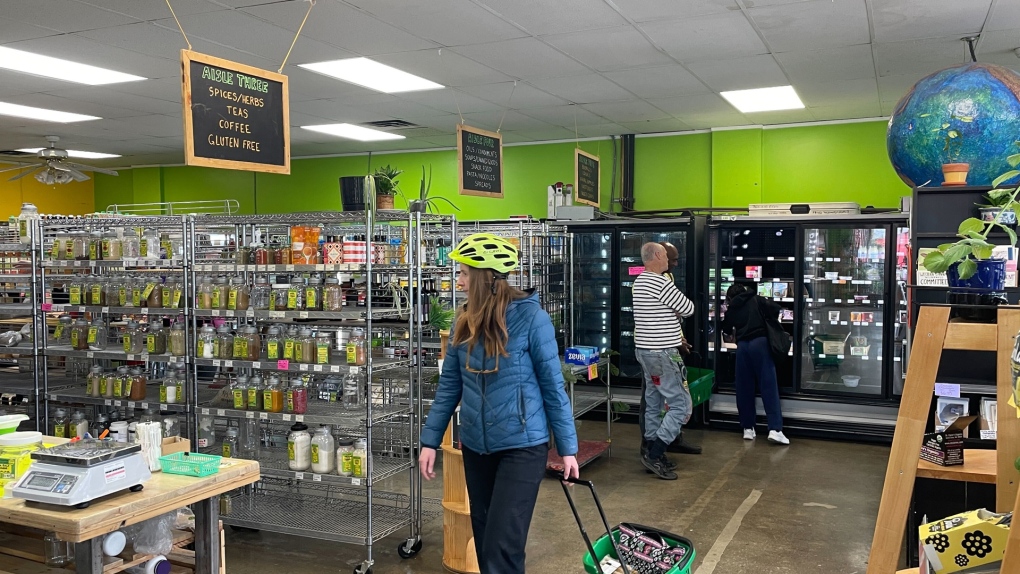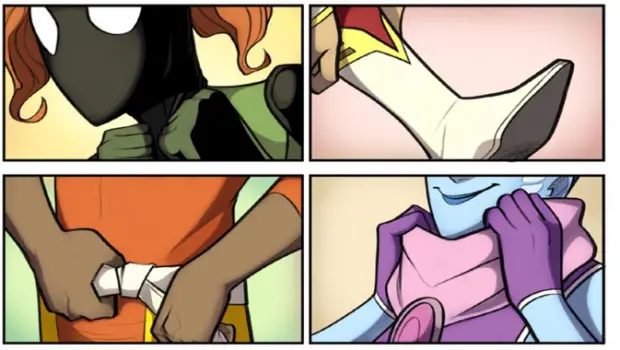The masses want innovative new sex toys, they just don’t want to be seen backing them
Alex Fine, CEO of the sextech company Dame Products, knows better than most just how effective crowdfunding can be. Last year, her tiny startup made history(opens in a new tab) with the first sex toy ever to be featured on Kickstarter.
“Crowdfunding is incredibly validating,” she said. “If you want to know if you have a good idea, crowdfunding can help you figure that out.”
Turns out, she did have a good idea, and the money her company raised has allowed her to turn it into a reality.
That’s exactly the kind of dream that the rise of the crowdfunding economy promised – the democratization of supply and demand. But when it comes to raising money for sex toys, many entrepreneurs have found that the reality of crowdfunding is the opposite of dreamy.
The consumer demand for innovative sextech is there, but a lingering stigma still stands in the way of these crowdfunding platforms being an effective way to bring these products to the masses.

Dame’s Fin vibrator is meant to be worn between your fingers

It also comes with an optional tether
When Dame’s “Fin,” a small vibrator designed to be worn between the fingers “like a natural extension of your body” to stimulate the clitoris during sex, debuted(opens in a new tab) on Kickstarter, it was the subject of ample press and fanfare. It seemed like a watershed moment for the industry. But it turned out to be the notable exception, not the new norm.
Until then, there had never been any sex tech on the site. There was no outward-facing policy concerning the presence – or, rather, absence – of such products, but a Kickstarter spokesperson confirmed to Mashable that internal guidelines within the company barred sex toys outright.
The closest thing to a sex toy you could find on the site before the Fin was a special box designed to store, charge, and sanitize them. Initially, Dame Products was rejected by Kickstarter, but because the two companies’ headquarters were close to each other in Brooklyn and they shared connections in the hardware world, the staffs got to know one another. This, Fine said, made all the difference.
She says a “nicely-worded email” from her staff to Kickstarter explaining their goals finally did the trick. “Nobody individually actually had a problem with what we were doing,” she added. “We explained to them why we’re so in line with what they’re trying to accomplish, and the part where we happen to be sexually-related is tertiary. We’re the kind of people that they set out to support.”
Within a week, Kickstarter had approved their request.

“Dame is a mission-driven company that was trying to make something new and innovative, and in that spirit we were happy to welcome them to Kickstarter,” David Gallagher, a communications director at the company, told Mashable.
Once it launched on the crowdfunding platform, the project was funded in just two days – and that’s without ever being featured on Kickstarter’s main page or newsletter. Indiegogo, another popular crowdfunding site that agreed to host Dame’s first couples’ sex toy two years prior, hadn’t gone out of its way to feature that product, either, regardless of its popularity.
Today, Kickstarter says it employs a more case-by-case approach in deciding whether or not to allow sex toy fundraising campaigns on the site. Though there have yet to be any other campaigns approved for sextech products.
“We’ve received a few sex toy submissions since Dame’s but none that met our standards,” Gallagher explained.
But to hear others working in this field tell it, neither Kickstarter nor any other crowdfunding platform will ever be the savior they need when it comes to bringing products to market. It’s part of a bigger issue the boutique sex toy market is facing.
In recent years, there’s been a definite shift in the way sex toys for women are marketed – many companies have moved away from the kind of tawdry packaging you might find in the back of an adult video store and toward a vision of pleasure as an integral part of sexual health and wellness.
But not everyone has caught up, and this has a real cost.
Ask any independent sextech entrepreneur what their biggest challenge has been, and it’s fairly likely their response will have something to do with funding. Banks often flat-out refuse(opens in a new tab) to give loans to any company operating in the adult space, as is their legal right. Venture capital firms are also quick to cite “morality clauses” that prohibit their involvement.
This was among the topics discussed at the most recent Women of Sextech(opens in a new tab) event, a near-monthly meet-up held in New York City where entrepreneurs gather to discuss their field.

A panel discussion at a recent Women of SexTech event
“I’ve had enormous challenges raising funds,” said Cindy Gallop, a sex radical and entrepreneur whose latest venture is Make Love Not Porn(opens in a new tab), a “social sex” video hosting and streaming site. Both Kickstarter and Indiegogo – which allows for the crowdfunding of sex toys but not anything to do with adult video – shot down her requests to appear on their platforms.
So she turned to iFundWomen(opens in a new tab), a lesser-known crowdfunding site, which welcomed her campaign(opens in a new tab) with open arms. So far she has raised less than $54,000. That’s something she attributes to a simple phenomenon: “fear of what people will think.”
“We don’t get the network effect that is a prerequisite for successful crowdfunding,” she says. “Success requires a large number of people publicly rallying around something. Some people who have funded us on iFundWomen have written to us and said, ‘I love what you’re doing. I think it’s fantastic and I donated this much, but please don’t publish my name anywhere.’”

MysteryVibe, another pioneering sextech startup, has also been public about their struggle to find funding. The company explained some of those challenges in a blog post(opens in a new tab), saying, “There is still a lot of stigma surrounding sex, something we experienced first-hand when launching MysteryVibe.”
Of course, even for those who manage to get their concepts approved by a mainstream crowdfunding platform like Indiegogo, success is never guaranteed. As Motherboard(opens in a new tab) noted last year, many of these sextech products failed to launch altogether. For those that did raise the necessary funds, they still faced the same hurdles all hardware-based startups run into: issues like patent lawsuits(opens in a new tab), over promising, and other technical conundrums.
But many sextech entrepreneurs never have the chance to try. In addition to the stigma that still clings to sex toys, there’s another major reason why crowdfunding will never quite be the great equalizer in this space: the products themselves are inextricably linked to their inventors.
While this can work to the advantage of some entrepreneurs, it’s not necessarily a good formula for everyone.
“I think our first Indiegogo campaign was successful for three reasons,” Fine says of Dame’s first venture into crowdfunding on the less-discriminating platform. “1.) The product is amazing. 2.) We talk very frankly about sex without putting all the frill around it, and 3.) It’s because we look the way we look. It’s like, ‘Oh this girl could be my daughter.’ I think that the fact we are well-educated, white, and went to amazing schools — which has something to do with my privilege — made people more comfortable donating. I have a hard time imagining that hadn’t been helpful.”

Dame Products founders Janet Lieberman and Alexandra Fine
Indeed, research has shown that backers exhibit a statistical bias(opens in a new tab) against minorities when it comes to choosing whether or not to support a campaign.
That obviously could spell trouble for someone looking to crowdfund, say, a sex toy specifically designed by and for same-sex couples, or differently-abled people, or, really, anyone other than the heterosexual status quo.
That’s perhaps the biggest missed opportunity in all of this – since it’s those very populations that stand to benefit the most from innovative sextech.
-
Editor
Cassie Murdoch
-
Illustrations
Vicky Leta
-
Photo Editor
Haley Hamblin
Source: bing.com



